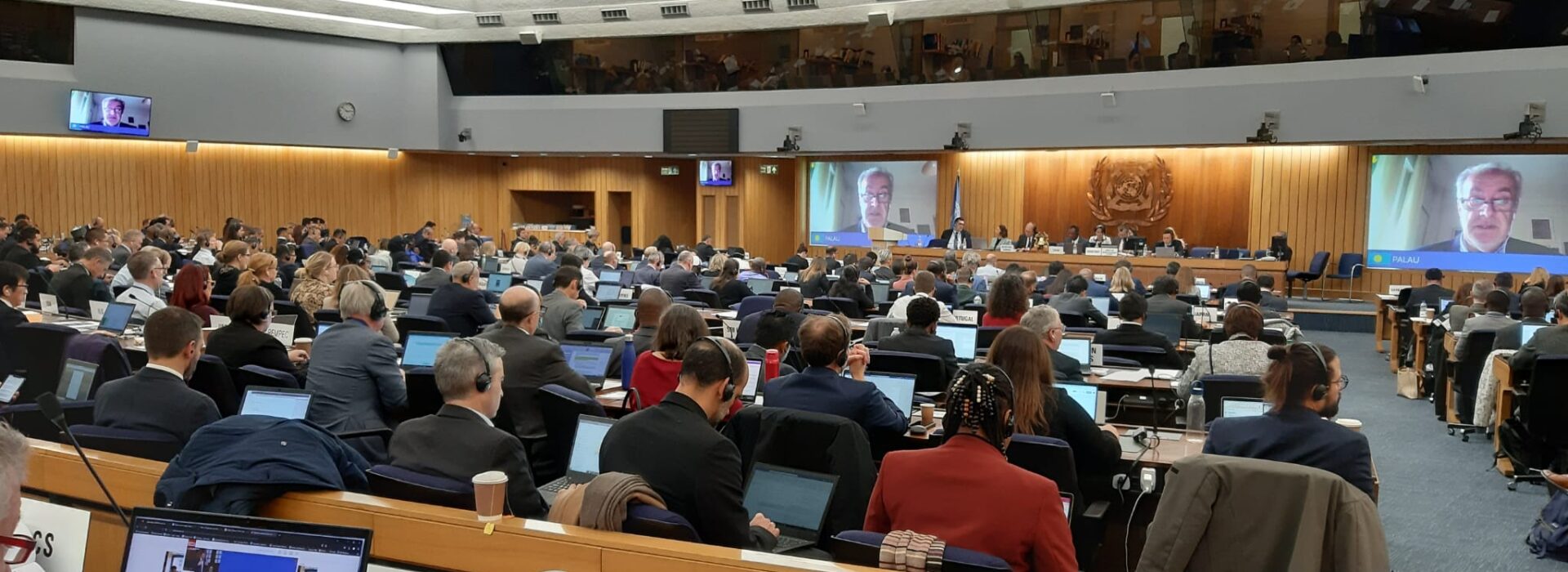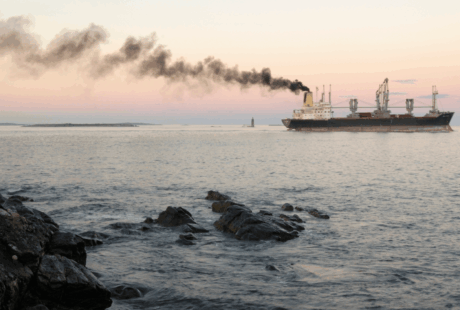Chapter 2: Two IMO Pricing Mechanisms – Levy and Credit Trading
As negotiations progress at the IMO, two main pricing mechanisms are on the table to drive shipping towards decarbonisation, however they have different implications of a just and equitable transition:
Credit trading mechanism (otherwise known as “J9” and “ISMFMF”): A risky bet
Like other credit trading systems, this one works by giving credits to ships that stay under their given emissions target, which they can then sell. But what about ships that go over? They’ll have to purchase credits from ships that stay within their targets or purchase a “remedial unit” from the IMO. A remedial unit is essentially a compliance credit from the IMO, acting as a fallback option for ships that have exceeded their emission targets. It all sounds like a clever system, favouring and rewarding clean operators while holding polluters accountable. But there’s a catch:
Revenue instability – In the early transition phase, few ships will meet their targets which will generate high revenues for the IMO fund. But as more ships become cleaner and start meeting their target, the revenue will drop. The problem with this is that as the need for funding increases, the money could dry up.
Market unpredictability – Future fuel prices and the number of credits available are unpredictable. This could leave shipowners hesitant to invest in clean technologies without knowing how much they could pay or earn.
Weak investment signals – The volatility of credit prices makes it difficult to plan long-term investments in alternative fuels and infrastructures.
Food security risks – Credit price swings can drive up freight prices, increasing food costs in vulnerable regions.
Greenhouse Gas Pricing Mechanism (supported by ICS and pacific islands (6PAC+): Stability on rough seas
Now imagine a more stable system: every ship pays a fee for the amount of pollution it emits. No guessing, no trading, and ensures that all ships contribute to a just transition. This GHG pricing mechanism has two possible approaches:
- A levy: polluters would pay a fixed price per tonne of co2 emitted
- A zero or near zero fuel contribution: ships pay a fee on emissions that exceed a certain threshold, encouraging them to switch to zero or near zero (ZNZ) fuels.
And here is why this system makes more sense:
Predictable and stable revenue: The fund is continuous and flowing, ensuring the path to decarbonisation and equity stays strong.
Clear investment signals: Shipowners and fuel producers know what to expect, and can plan and invest accordingly, encouraging investment in green technologies.
Supports developing countries: revenue from the levy can be directed to clean fuel and investment in infrastructure in vulnerable countries, ensuring no-one is left behind.
Food security protection: By keeping revenue stable, the levy prevents volatility in the cost of freight and therefore protects vulnerable countries reliant on imported food and ensuring resilience in global food supply chains.
The role of funding for developing countries.
For a truly equitable transition, targeted support is essential. Low-income countries, particularly those with abundant renewable resources, have immense potential to produce e-fuels. But to unlock that opportunity, approximately $50 billion in grants will need to be freed up – or a lower amount if combined with concessional finance (low-interest loans from development banks).
These funds would unlock the first $400 billion in capital investments for zero or near zero emission fuels by 2030, bring clean energy and economic growth to regions such as Brazil, India and Africa. Without this support, these countries may miss out on the green shipping boom, widening inequalities even further.
Without this funding in place before 2030, low-income countries risk being left behind. A predictable and sufficient revenue stream from the levy would secure this funding and ensure that everyone is on a level playing field.
Conclusion: the clear choice
While the debate between credit trading and GHG pricing mechanism continues, what is clear is that a stable and equitable solution is needed. While credit trading could bring about the energy transition, with ZNZ fuels mainly produced in developing countries and being shipped on demand, there are clear, underlying issues with revenue instability and market unpredictability.
Adopting a strong universal levy will drive clean fuel development, support low-income countries, and ensure that food security remains intact. It’s a win for the climate, the economy and the most vulnerable countries.
Read Chapter 3: Wind Propulsion & Energy Transition
Posted on: 2 April 2025


